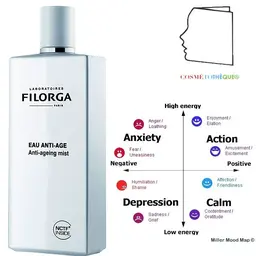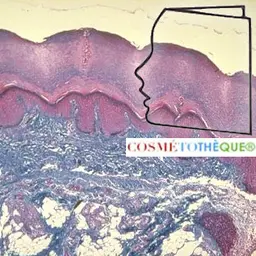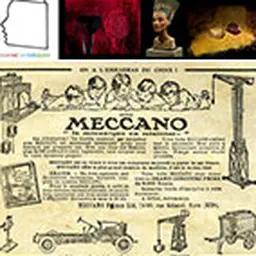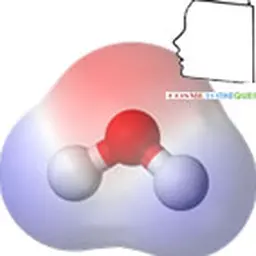
Why a contribution dedicated to Jean Morelle? Because he is the father of the synthesis and use of lipoamino acids in cosmetics. But also because he is one of those curious and inspiring characters for the next generations. And because it has been at the origin of many advances in several fields for many brands. And because… there is no shortage of"because" to encourage you to discover it!
Why a contribution dedicated to Jean Morelle?
Because Jean Morelle was one of those characters who occupied the panorama of the cosmetic industry for many years, a little over 50 years.
Because Jean Morelle has contributed to several significant and visionary advances: lipoamino acid chemistry, keratolytic agents, lipoperoxidation.
Because Jean Morelle is one of those curious and inspiring characters for the next generations.
Because Jean Morelle has been at the origin of many advances in several fields for many brands.
Perhaps also because we had some masters in common, including Michel Polonovsky, who opened us to the life sciences.
But also because Jean Morelle was an incredible consumer bulimic of scientific and technical information taking into account the creative synthesis approach of Jules Vernes to know how to be an innovator before the date.
But also because Jean Morelle is the father of molecules still used today by Seppic for the Air liquide group for very current applications.
All this was well worth Jean Morelle being at the centre of a contribution linking tradition and innovation,"mission statement" of the Cosmétothèque®.
This contribution was made by Régine Frick, who says she was pleasantly surprised by this story, and with the collaboration of Jean Morelle's daughter, Éliane Lauzanne, whom we thank for her collaboration and availability. We owe him some documents that the Association can share with its members.
Thanks to both of them.
Jean-Claude Le Joliff
****************************************************
Jean Morelle is the father of the synthesis and use of lipoamino acids in cosmetics but to summarize his immense activity on this subject would be reductive.
Born in 1913 and died at the age of 90, Jean Morelle was an independent researcher who never ceased during his life to be interested in the living world and its understanding. Graduated from the Lille School of Chemistry as a chemical engineer in 1934, he had as biochemistry professor Michel Polonovski[1] to whom he devoted great admiration and who passed on to him his passion for this science. All his life, Jean Morelle had a strong interest for the skin on which he concentrated his research. From very thorough investigations of the biochemical field in order to continuously improve knowledge, he created substances in harmony with the skin to preserve and/or restore its biological balance.
Jean Morelle had a sense of the concrete and his work has always given an important part to experimentation. At the age of 14, he had his first reagents in a cabin at the back of his parents' garden and throughout his life, both in his country residence and in his apartment in town, he had his laboratory for synthesis and analysis. Every day, he reviewed the Chemicals Abstracts and Bio Chemicals Abstracts before working in the lab. Jean Morelle did not forget the regulations either and said, according to his daughter, Éliane Lauzanne, with whom he collaborated and with whom we met to write this biography,"…. that it was necessary to hold science in the right hand, the right in the left" . He was also an expert at the Paris Court of Appeal.
His first works related to hair products and depilatories
His first works, in the years 1950 - 1965, concerned hair products. Starting from the observation that the hair was made of keratin which contains 3 % sulphur, Jean Morelle was interested in the contribution of organic sulphur substances to the hair for shaping applications.
In 1951, he filed a patent (n° 1.031.538) on a process of permanent cold waving of hair and hairs. Until then, perming was done either hot or cold with thioglycolic acid, but this damaged the hair and showed a certain toxicity. Jean Morelle then developed a new process based on thiolactic acid (non-toxic) or its salts, to allow the hair to give the desired shape without altering it and beautifying it. He then declined the use of thiolactic acid in depilatory products (patent no. 73335 filed in 1956). He then developed the field of perming by proposing, in the years 1965, products without sulfhydril derivatives (patent n° 1462498). He also developed compositions for the aesthetic maintenance of hair, based on film-forming elements such as gums and natural resins plasticized by associations of lipoproteins (patent no. 1427125 - 1964).
In the 1960s, as a result of constant progress in the study of cutaneous biochemistry, he designed new lipoprotein structures based on the condensation of various fatty chains, including lauric acid, on peptides present in keratin or collagen hydrolysates of animal origin. These lipopeptides, variously salified, give a first family of organic detergents specially studied for personal hygiene and shampoos marketed under the name of roteols. [2]
Skin acidity and lipoamino acids
Understanding the origin of the skin's acidity was a second major topic of interest for Jean Morelle. In 1966, he made a presentation on this subject at the Vth International Symposium on Dermo-Chemistry at the Collège de France[3].
He demonstrated, after determining the acid indices of different fractions obtained from stratum corneum extractions, that cutaneous acidity is essentially due to the presence of associations of fatty chains with amino acids or short peptides. In this form, there are then a certain number of free carboxylates which confer on the superficial epidermal medium a"biological" acidity of the same type as that of lipoamino acids, and different from the mineral or organic acidity known until then. From this work, he showed that the application of compositions containing lipoamino acids determined a relatively rapid biochemical reconditioning in the case of inflammatory processes[4]. Understanding the skin's acidity was a decisive step for the rest of his work, but also for cosmetic science.
Jean Morelle worked extensively on the synthesis of lipoamino acid structures and their physico-chemical and biological properties. He worked from different proteins (collagen, keratin, casein) on which specific fatty acids were grafted leading to lipo-polyamino acids. It also synthesized lipomonoamino acids from a particular amino acid or mixture of several amino acids and not hydrolysates.
He explained the great interest of these products for the cosmetics industry during a conference given in April 1970 at the 6th International Congress of the Federation of Cosmetic Chemistry Societies in Barcelona[5] or in an article published in Parfum Cosmétique Savon[6]. Jean Morelle emphasizes the search for maintaining the physiological stability of the skin and its appendages: hair, nails, is the essential basis of any scientific cosmetic. It is a matter of harmonizing the terrain with the nature of the substances whose purpose is to maintain and possibly correct its aesthetics and this essentially based on physiological considerations. For that, there are imperatives that must be respected. "
The specificities of lipoamino acids in their different forms respect the physiology of the skin. They have been used in many areas. - Detergents with 2nd generation biological detergents, Lipoproteols, which are polylipoamino acids obtained from salts of lauroyl collagenic or keratinic or caseinic acid. Applications are for personal hygiene, shampoos, soaps, mild cleansers. - Hygiene with caprylylcollagenic acid for foaming and cleansing compositions as well as soothing lotions for face and body. Undecylenoylcollagenic or caprylylcollagenic acids are used for their antibacterial and antifungal properties in anti-dandruff shampoos, deodorant compositions, lotions, hair lacquers, for a plasticizing and reconditioning effect. Patents 1518665 (1966). - Cosmetics with a non-exhaustive and to name but a few: palmitoylcollagenic acid (patent 1431698 - 1964), caprylylcystinic acid in hair loss lotions and against hyperseborrheic secretion of the face and body. The product can also be used for nail care (Patent 1462498 - 1965), palmitoylcystinic acid in maintenance treatments for oily skin and acne-prone skin but also for nail treatment. Palmitoylhydroxiproline for its anti-aging properties and skin balance, agriculture with lipoamino acid salts such as Cu salts for their biostimulant actions and in the treatment of vines against Botrytis. Sofrapar continues to use the products for applications in organic agriculture.
Food peroxidation
Since 1985, Jean Morelle has been interested in the peroxidation of dietary lipids and how to remedy it.
In a book devoted to this question[7] and prefaced by Professor Israel, he informs consumers that they are subjected to a permanent oxidative aggression by using certain foods generating an abnormal oxidation system: lipoperoxidation.
The process of lipoperoxidation comes from the action of light and air activated by heat on lipids present in food including fats, meat, fish, and leading to the formation of degradation products including a toxic substance: malondialdehyde (MDA). These substances are involved in various processes leading to premature aging and pathological situations such as inflammation.
Jean Morelle reveals for the first time, following numerous experiments recounted in a CD-Rom[8], that certainly some vegetables and plants have an important antiradical action by preventing the oxidative process, but especially that others also have an anti-lipoperoxide action. These then have the ability to capture oxygen from existing lipoperoxides or to remove oxygen from the oxidized product on our plate. We note that the determination of the oxidation level of a food is carried out by measuring the peroxide index (reactive activity of active oxygen fixed on the fatty substance in the presence of potassium iodide).
It then appears within the framework of the experiments conducted by Jean Morelle and his daughter, Éliane Lauzanne, that : - Most fruits and vegetables have anti-radical activity and some also have anti-lipoperoxide activity: antiradical activity in UAR (antiradical unit)[9] : red cabbage (2500) > broccoli cabbage > red bell pepper leaves > red bell pepper (550) > green bell pepper > radishes leaves > lamb's lettuce > carrots leaves > chives > spinach > tomato > white cabbage > sorrel > white onion > parsley > black radish > green olive > avocado > red onion > lettuce > yellow onion > escarole > radish > green beans > garlic > dandelion > celeriac > black radish > endive > eggplant > courgette (10) ; antiradical and anti-lipoperoxide activity[10]: nettle > bilberry > red cabbage > red bell pepper > orange > leaf beetroot > celery leaf > green beans > endive > black radish leaf > yellow bell pepper > green bell pepper > spinach > sorrel > raspberry > strawberry > broccoli cabbage > kale > courgette > garlic > prunes > olive > lentils > peas > lemon > chives > watercress > cauliflower > carrot > kiwi > scarole. - The snail has a strong anti-lipoperoxide activity mainly due to the fact that it feeds on polyphenolic constituents of herbs including nettles.
This work has been the subject of scientific publications, patents but also, in 2003, applications of type : - cosmetics, particularly in a range of original Cosmetolégumes® extracts proposed by Laboratoires Bomann (Soliance Group)[11] - food supplements with Obiotic Rexynol Plus at Rexynol 4 complex of Laboratoires Inebios[12]. This complete antioxidant fights against the four causes of cellular aging: free radicals, lipid oxidation, hydrogen peroxides, external pollutants with a concentrate titrated in four plant extracts: red cabbage, broccoli, blueberry, nettle.
His many contributions to the improvement of scientific knowledge
Jean Morelle has contributed to numerous magazines: - He was for several years editor-in-chief of Cosmetology , international scientific information journal, biochemistry and cosmetology archives, published by Varia. This review had"the following objectives to make known the activity of the French Society of Cosmetology, to increase its prestige and to raise its scientific level". (Preface to No. 1, pp. 9-10, October 1957. - He has written various articles published in international journals including The Modern Perfumery , Biochemistry and Cosmetology Archives , Cosmetic and Soap Perfumes , Perfume Cosmetics Flavours , Rivistia Italiana.
He has written several books: - a two-volume treatise on Cutaneous Biochemistry with a very extensive bibliography (nearly 5,000 references (4549)) showing the extreme precision of this researcher and his taste for a thorough investigation. The works were printed by Varia in the years 1957 - 1959; • Lipid chemistry and biochemistry published by Varia in 1964; - A CD Rom published by Sofrapar: Scientific revelation of lipoperoxidation. Free radicals, nutrition and health - March 2001 ; • Food oxidation and health: prevention of the dangers of oxidative aggression through the proper use of fruits and vegetables, published by L'Œil F.x. de Guilbert in 2003.
He was a founding member or co-founder of several scientific societies: - the French Society of Cosmetology whose creation was decided in December 1949. In 2003, a few months before his death, at the age of 90, he gave a lecture on his most recent work on lipid peroxidation; - the Société de Dermochimie which he chaired for several years and which held its conferences at the Collège de France; - the International Federation of Cosmetology Societies, alongside Sabetay, René Colson, Sfiras and Henri Luzuy as representatives of France. Other nations present were America, England, Belgium, Italy, Germany, Switzerland and Czechoslovakia.
Jean Morelle was first a consulting engineer for various cosmetology companies and then exploited his numerous patents. Rhône-Poulenc had a monopoly on the manufacture of lipoamino acids. The companies applying these molecules were numerous: Biotherm, Dior, Chanel, La Roche-Posay, Akileine laboratories…
During his lifetime, Jean Morelle filed more than 150 patents.
References
1. http://www.patrimoinehospitalierdunord.fr/biographies/page41.html 2. Morelle Jean, Biochemistry and Cosmetology Archives No. 36, April 1961 3. Morelle Jean, Biochemistry and Cosmetology Archives No. 95 and No. 96, April 1967 4. Morelle Jean, Biochemistry of lipoprotein associations internal Rhône-Poulenc document, development and special industrial products department 1969 5. Morelle Jean, conference of April 9, 1970 during the 6th International Congress of the Federation of the Societies of Cosmetic Chemistry in Barcelona, "What are lipoamino acids? What interest do they have in cosmetics?" 6. Morelle Jean, "Lipoamino acids and cosmetology" Parfum Cosmétique Savon de France, vol 3, n°2, fév. 1973 7. Morelle Jean," Oxidation of food and health, prevention of the dangers of oxidative aggression through the proper use of fruits and vegetables". collection Ecologie Humaine François-Xavier de Guibert 8. CD-Rom, "Free radicals, food and health" by Jean Morelle, Sofrapar edition 9. Morelle Jean," Oxidation of food and health, prevention of the dangers of oxidative aggression through the proper use of fruits and vegetables". François-Xavier de Guibert Human Ecology Collection, painting p. 225 10. Morelle Jean," Oxidation of food and health, prevention of the dangers of oxidative aggression through the proper use of fruits and vegetables". François-Xavier de Guibert Human Ecology Collection, painting p.220 11. Cosmetolégumes ® commercial brochure, Bomann Laboratory - Soliance Group, April 2003,"U new vision of anti-ageing " 12. http://www.inebios.eu/obiotic.html and http://www.inebios.eu/IMG/pdf/Dossier_presse_Rexynol_Plus_2.pdf
|
Contribution made by Régine Frick Régine Frick is a chemical formulation engineer and a CNAM graduate in innovation management, culture and marketing. She worked during 12 years in research and development at Chanel Parfum Beauté and has been a consultant for 6 years in her 3 favourite fields, namely communication, innovation and development for the cosmetic industry. From her technical and scientific skills, she uses as a consultant more particularly the science of mixtures associated with experimental designs to solve development problems. From her intellectual curiosity and her interest for society, she proposes to work with her clients on expected innovations . Her natural taste for communication has led her to write texts whose objective is to make scientific discourse accessible to everyone. |












